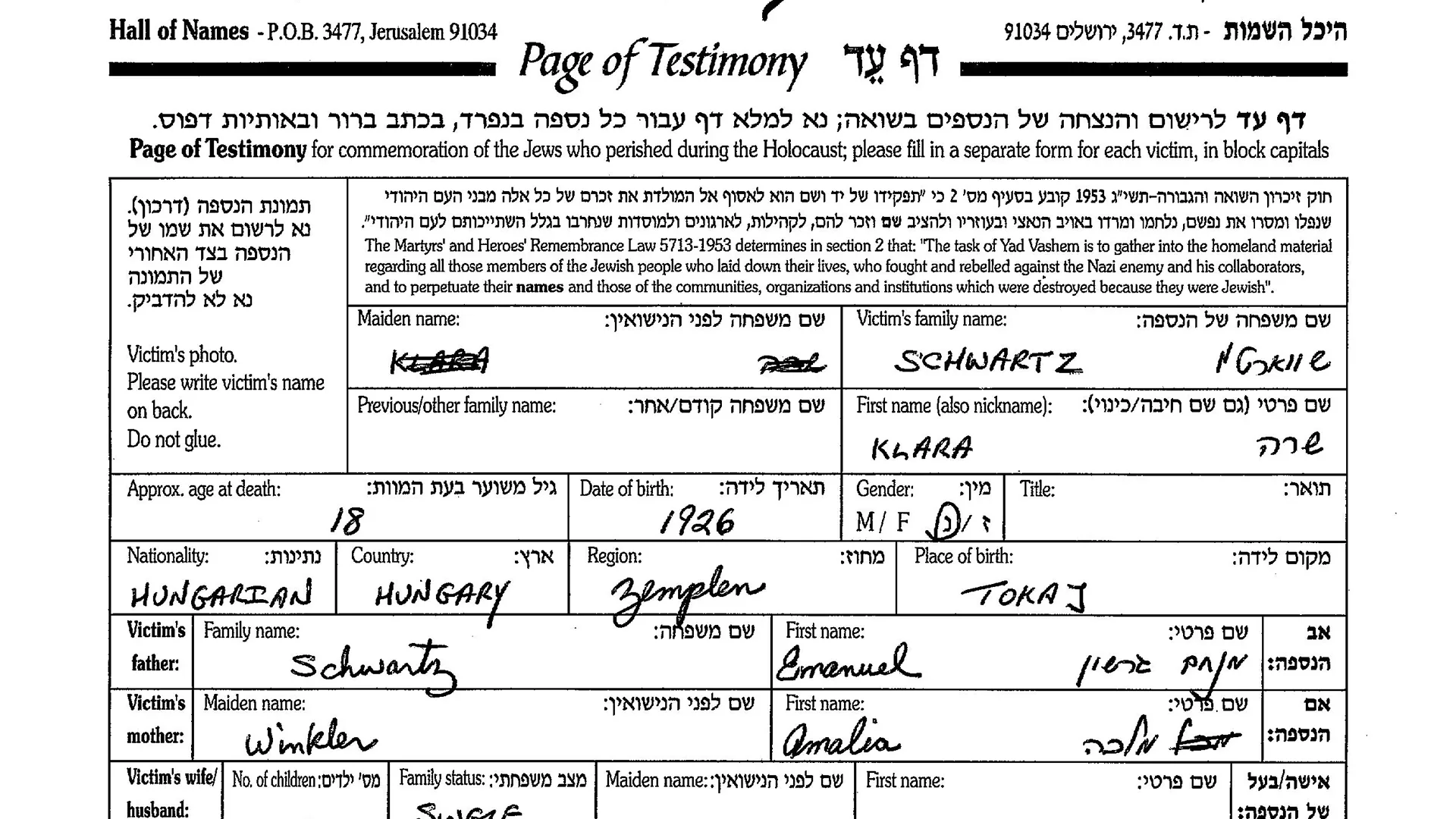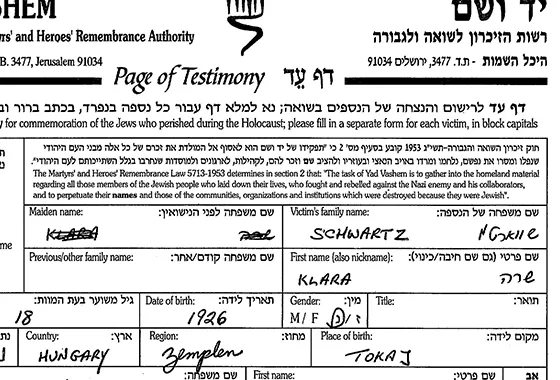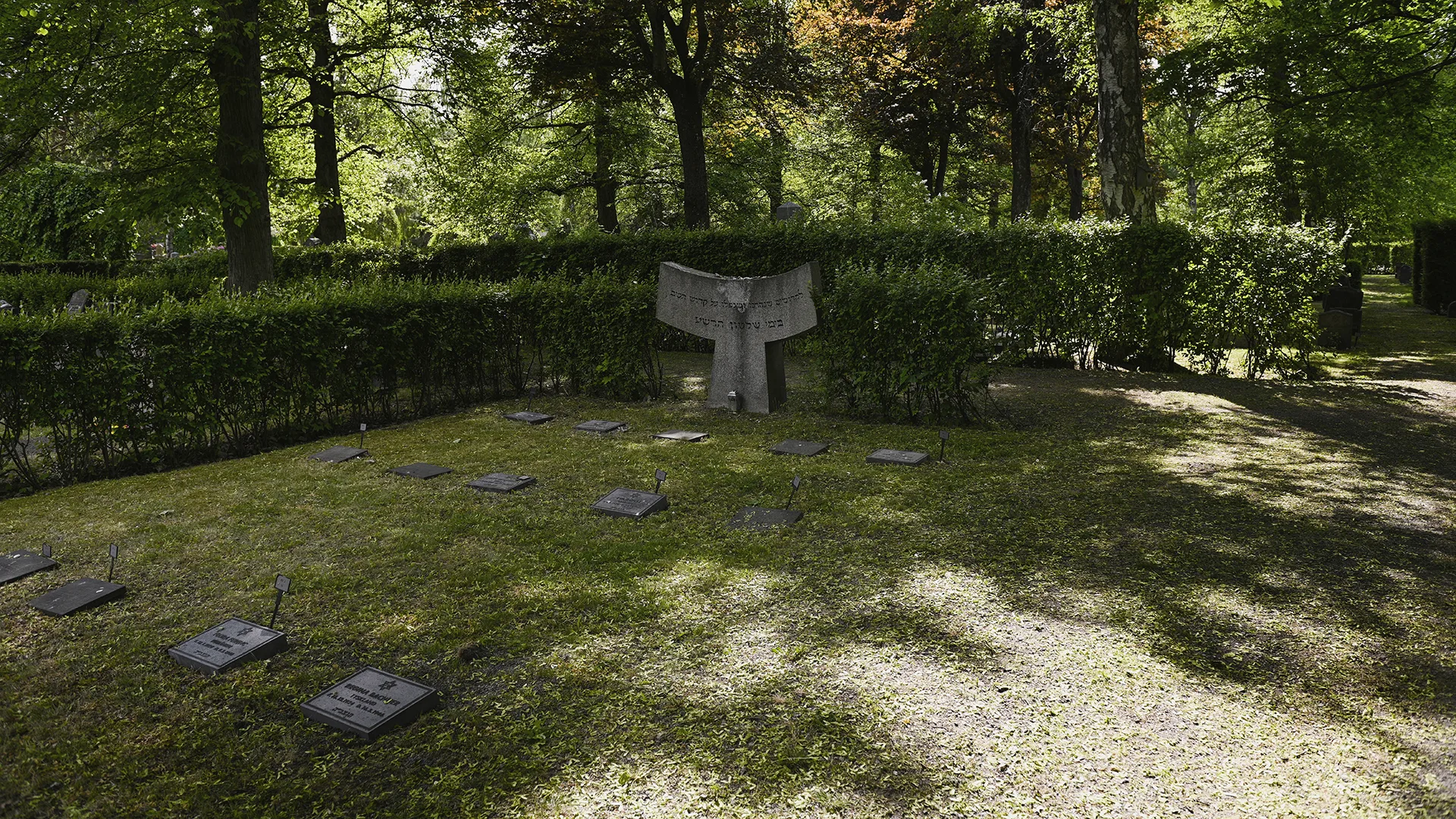The Schwarcz family were religious, Orthodox Jews and Klara's father, Emanuel, worked as a rabbi and merchant in the city while her mother, Amalia Malka, worked in a pharmacy. Klara, who was often called by her Jewish name Sara, lived in Tokaj with her parents, nine siblings and grandparents Mihaly and Pepi. In this beautiful town, sandwiched between the hillside vineyards and small river Tisza, around 1,000 Jews and 5,000 non-Jews lived side-by-side. But that came to an end when the war broke out.
Klara was 12 years old when the Germans invaded Poland in September 1939. Even before the outbreak of war, Hungary had become close to Nazi Germany and in 1940, just a year after the war started, Hungary allied itself with the Axis powers and Nazi Germany. Jews in Hungary now began to face discriminatory, anti-Jewish laws, inspired by the German Nuremberg Laws. The laws stripped Jews of their rights and prohibited them from holding certain jobs and marrying non-Jews, among other things. The laws made life difficult for Jews in Hungary, but it was not yet comparable to what was happening to Jews in Poland, the Baltic States and Ukraine.
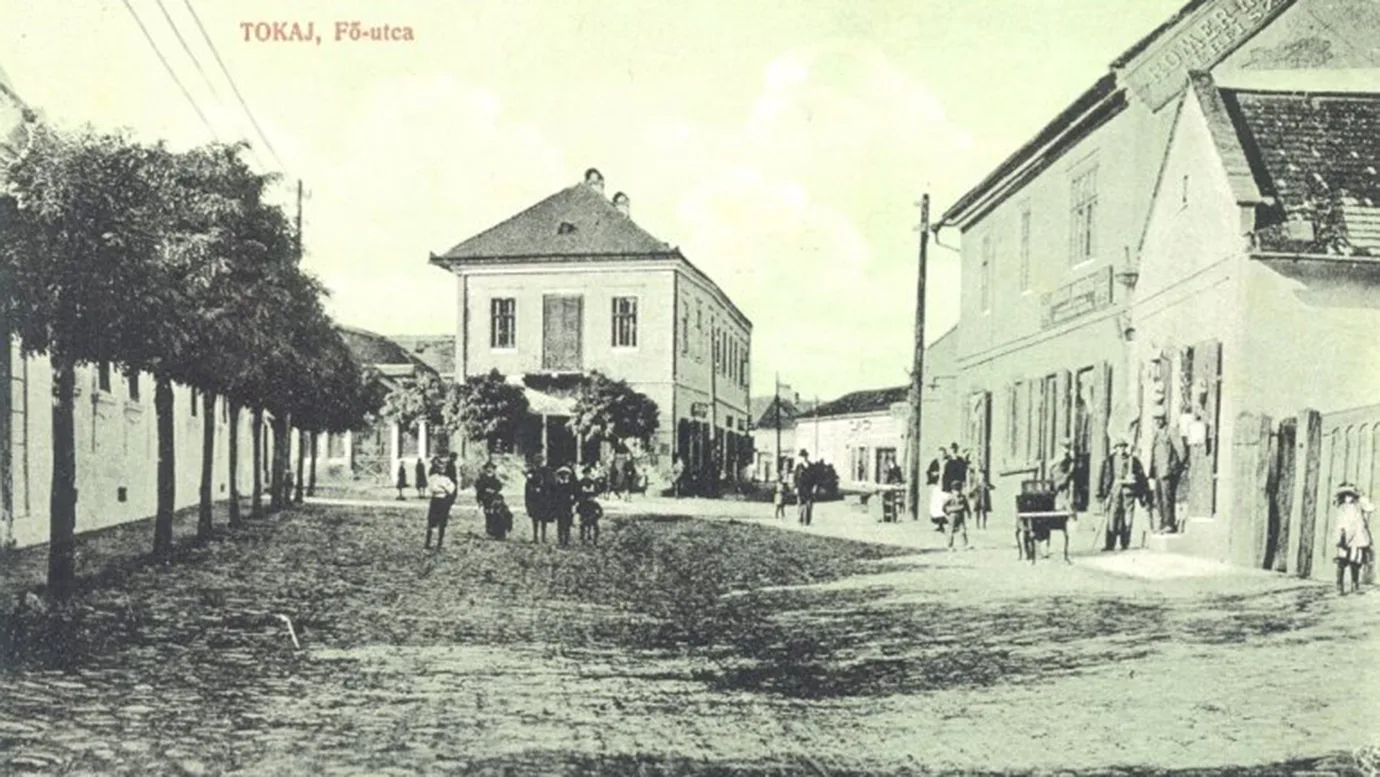
The Schwarcz family seems to have managed to stay together and life continued during the first years of the war in Tokaj. But everything changed in the spring of 1944. Despite severe pressure from the Nazis and its anti-Jewish laws, Hungary had until now refused to deport Hungarian Jews to death. Instead, the Hungarian government had tried to negotiate with the Allies after the Axis powers' heavy losses on the Eastern Front in 1943. Nazi Germany therefore chose to invade and occupy Hungary in March 1944 to stop the peace negotiations. Immediately, the Germans established ghettos in major Hungarian cities where the Jews were forced to live. This was all part of a plan by senior SS leader Adolf Eichmann to murder Hungarian Jews as quickly as possible. Without knowing it, Klara and the Schwarcz family's fate was sealed.
On April 6, 1944, the Hungarian police arrived and arrested Klara and her family, as well as other Jews in Tokaj. They were forcibly relocated to the larger town of Sátoraljaújhely, called Ihel in Yiddish, on the Slovakian border, which had been a stronghold of learned rabbis for centuries with a significant Jewish population. Here, the Nazis had established a ghetto where the Schwarcz family was forced to live, along with Ihel's 4,000 Jews and 11,000 other Jews from small villages and towns like Tokaj. The stay in the crowded ghetto was just a stopover in the Nazis' cruel plan. In May, the following month, the Nazis began deporting the ghetto's residents to Auschwitz and an almost certain death.
On May 20, 1944, Klara, along with her parents, some siblings and probably her grandparents, were forced onto a freight wagon. The journey from Hungary took several days. From the testimonies of other Hungarian Holocaust survivors, we know that the journeys were pure suffering, in overcrowded wagons without enough air, food and water. Upon arrival at Auschwitz, Klara appears to have been separated from most of her family. Her mother, grandparents and five of her siblings, Leah Yehudit, Isaiah, Rachel, Miriam and Yuta Malia, appear to have been murdered immediately upon arrival, in the gas chamber of Auschwitz-Birkenau.
Klara survived selection and was chosen to work in the camp. After six weeks in Auschwitz, she was transferred and sent to the labour camp in Christianstadt, in what is now Krzystkowice in western Poland. The Christianstadt camp was a so-called satellite camp of the large Gross-Rosen concentration camp, also in western Poland. It was home to one of Nazi Germany's largest munitions factories, where Klara and thousands of other prisoners were subjected to slave labour. Klara initially worked as a slave in the forest, where the female prisoners were forced into hard labour, such as felling trees, building roads and railways and carrying out heavy digging work before she ended up in the munitions factory.
After seven difficult months in the camp, the Allied forces were getting closer. In the bitter February cold, Klara and the other prisoners were forced to march towards Germany on foot. She and other prisoners were severely emaciated by this time and many died of exhaustion, cold or starvation during the long marches. Those who could not keep pace during what became known as the death marches were shot dead. Eventually, Klara and the others were transported to the Bergen-Belsen concentration camp. In the overcrowded and cramped camp, diseases such as dysentery, diphtheria, typhus and tuberculosis spread and killed thousands. Klara fell ill with typhus and developed severe diarrhoea and fever.
Liberation and time in Sweden
On the April 15, 1945, Bergen-Belsen was liberated by British forces. At that time, the camp held more than 60,000 prisoners, most of them Jews and the majority in a terrible state of starvation and disease. Thousands of dead prisoners were lying unburied in the camp. Klara and other surviving prisoners were moved out of the camp and received medical care. Meanwhile, the Allied forces tried to register all survivors. On her registration card, Klara states that she wishes to move on to Palestine.
Klara was one of over 9,000 survivors who were brought to Sweden for treatment by UNRRA transportation. After a period in the transit camp and the Swedish field hospital in Lübeck, Klara, who was seriously ill with typhus, was taken to Sweden on the S/S Kastelholm on July 11, 1945, together with Rozsi Hirschl and others. The Kastelholm docked in Stockholm after a four-day voyage. Klara, Rozsi and many of the other seriously ill were immediately transported to the emergency hospital in Sigtuna. Klara was admitted to the hospital with typhus on the July 15, 1945, her 18th birthday. She told the doctors that she knew her mother had been murdered in Auschwitz, but did not know what had happened to her siblings. Klara stated that she thought her father may have survived. She never learnt that her father and several of her siblings also survived the Holocaust.
Klara died just two weeks after arriving in Sweden in the early morning of the July 31, 1945, from the typhus she had been infected with in Bergen-Belsen.
Klara's father Emanuel and four of her siblings survived the Holocaust. Emanuel remarried shortly after the war to another survivor, Szeren Kraus. He was reunited after the war with his daughter Iren and son Miklos, who both survived. Klara's younger brothers, Miklos and Jenö, were also deported to Auschwitz on an earlier wagon from the ghetto. They survived selection and were both sent to the Mauthausen concentration camp in Austria, where they were subjected to slave labour in the factories that produced fighter plane parts for the Nazi Air Force, among other things. Both managed to survive the concentration camp, where nearly 100,000 people lost their lives.
Klara's older sister Czecilia, also known as Lily, also survived the war and towards the end was in Slutsk, Belarus, until she was reunited with the rest of her surviving family members in Austria. Together with her father Emanuel and younger sister Iren, she chose to move to New York after the war, where they lived the rest of their lives. Miklos moved to Jerusalem, where he lived the rest of his life, while his brother Jenö moved to Australia.
Klara's family seems to have discovered that their daughter and sister died in Sweden. Her grave is one of the few where family members erected a larger headstone, alongside the small, original headstone in her memory.
Klara's route
The map shows the places Klara was forcibly transferred or travelled to, from Tokaj where she lived to the Northern Jewish Cemetery. Click on the information symbol to see all the locations, listed in chronological order.
About Klara Schwarcz
About Klara's father Emanuel Schwarcz
About Klara's mother Amalia Schwarcz
About Klara's sister Czecilia Silberman
About Klara's brother Jenö Schwarcz
Aboyt Klara's brother Miklos Schwarcz
About Klara's sister Iren Schwarcz
About Klara's siblings
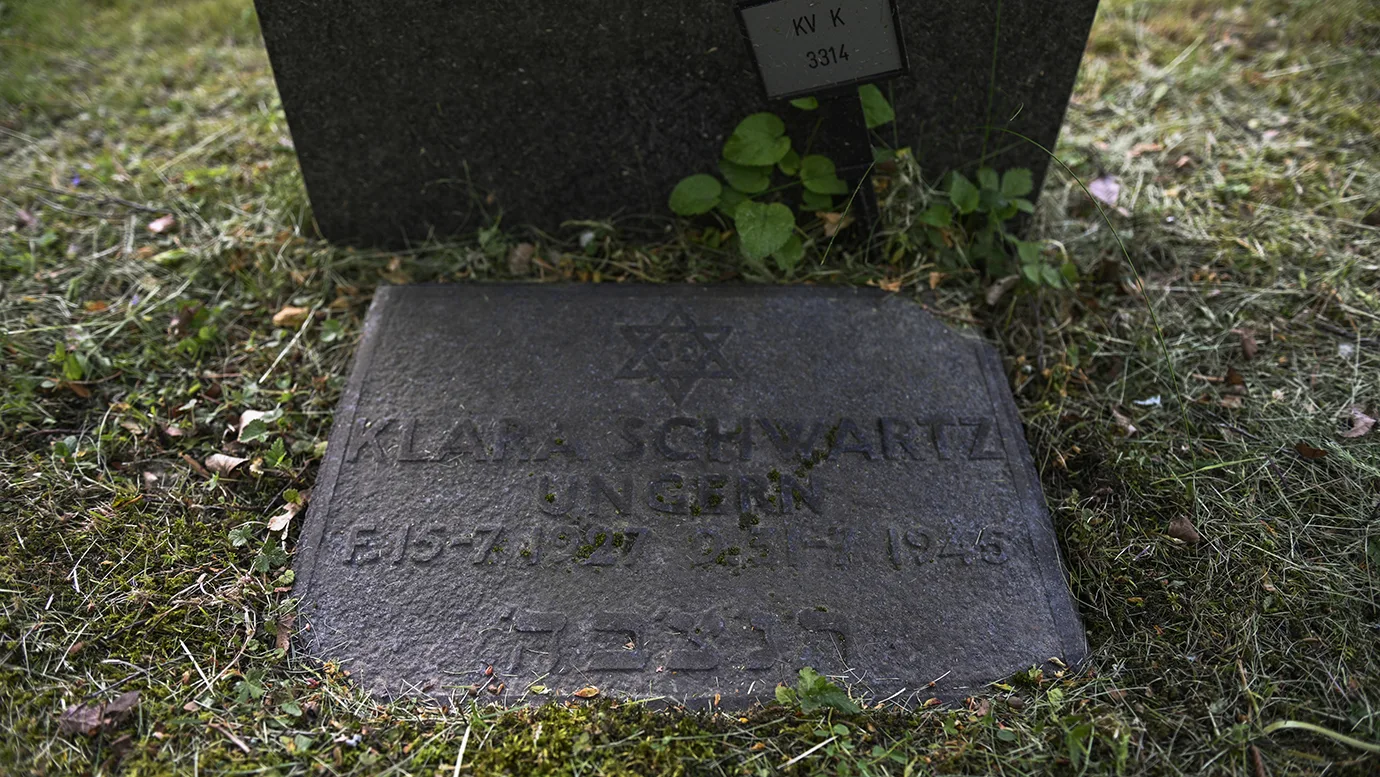
Learn more about the fates of other
Here you will find links to the "Förlorade röster" [Lost Voices] collection page as well as links to all the personal texts, listed by surname.
